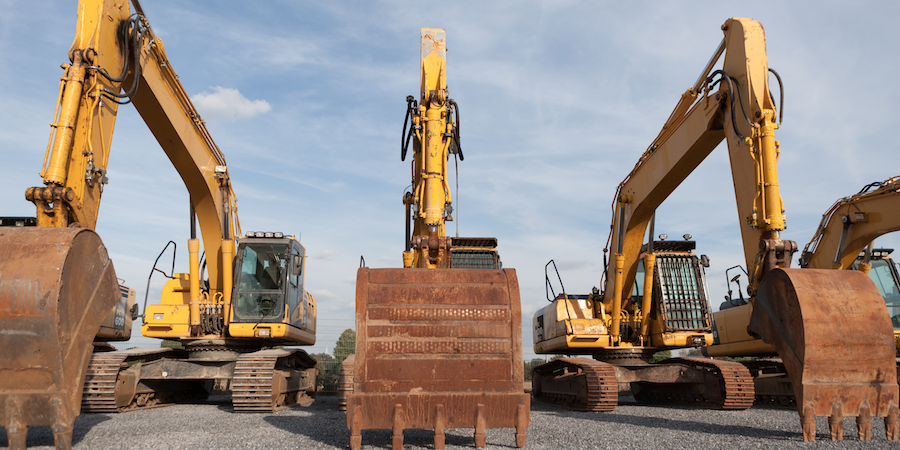Most states add jobs for year but only half do in June; Dodge, AIA, RLB data look rosyEditor’s note: Construction Citizen is proud to partner with AGC America to bring you AGC Chief Economist Ken Simonson's Data DIGest. Check back each week to get Ken's expert analysis of what's happening in our industry.Seasonally adjusted construction employment rose in 39 states and the District of Columbia from June 2014 to June 2015 and declined in 11 states, an AGC analysis of Bureau of Labor Statistics (BLS) data released on Tuesday showed. California again added the most construction jobs (47,000 jobs, 7.0%), followed by Florida (25,200, 6.2%), Texas (18,900, 2.9%), Washington (15,300, 9.7%) and Michigan (14,000, 9.8%). Idaho again added the highest percentage of new construction jobs (13%, 4,600), followed by Nevada (11%, 7,000), Michigan, Arkansas (9.7%, 4,400) and Washington.)
Reshaping the Construction Industry
This is a “heads up” for those of you who track possible new restrictions on your construction projects. The Tennessean reports that the residents of Nashville will vote on August 6th for or against the requirement that 40% of all construction jobs on publicly funded projects be reserved for local workers in the Nashville area.This law is modeled on the Cleveland model that has already been enacted and is currently being challenged in the courts. The American Public Transportation Association (APTA) has published a white paper on the enforceability of the “local” worker preference requirement that is informative, especially with so many transportation projects underway or in the pipeline.With the current shortage of skilled craft workers in the major cities of the US, we wonder whether this movement might slow down an already slow construction industry recovery.
July 24, 2015
A survey conducted by the Associated General Contractors of America will show that the biggest challenge faced by contractors is their ability to attract new craft professionals. That news comes to us from AGC Chief Economist Ken Simonson as he tours the nation speaking to construction executives about the state of the economy. I caught up with Simonson, who is also a Construction Citizen author, when he was talking to contractors in Austin on Tuesday.In the survey of about 1,300 contractors, 83 percent said it is difficult to find craft professionals while 61 percent said it is hard to fill management positions like project managers and estimators.
July 23, 2015
Associated Builders & Contractors (ABC) of Greater Houston presented the Safety Training and Evaluation Process (STEP) awards at the July ABC Membership Breakfast. The Greater Houston chapter has 70 contractor member companies who are participating in STEP - including 52 Diamond and Platinum level recipients, the highest of the program’s accolades.The STEP program was established in 1989 by the ABC National Environment, Health & Safety Committee. It was developed and written by contractors, for contractors. Participating in STEP provides contractors with an opportunity to measure their progress through a 20 Key Component self-evaluation to identify areas of improvement and benchmark performance with fellow ABC members. More specifically, the program:
July 23, 2015
“Jill Wells, an official of Engineers Against Poverty, an advocacy group in Britain, described the guidelines issued by CH2M as commendable. But, she said, the company’s actions were unlikely to have much practical impact because construction companies passed responsibility for worker welfare down to subcontractors.“What the main contractors do is pass the risk down the subcontracting chain, and it is the workers on the bottom of the chain” who bear it, Ms. Wells said.” (New York Times) The New York Times reported this week that the 2014 DLA Piper report on the mistreatment of workers on the construction sites for the 2022 World Cup has resulted in few changes even though the FIFA scandal and the concerns of Qatar were thought to bring about major changes.
July 22, 2015
Recently twelve junior high and high school aged girls participated in a three-day camp at Virginia Western Community College in Roanoke, Virginia focused on introducing young women to careers in construction.Magic Camp: Mentoring a Girl in Construction exposed the girls to careers in several skilled trades including carpentry, plumbing, HVAC, and electrical. Representatives from heating and air conditioning giant TRANE brought equipment for demonstrations.WSLS-10 news anchor Dawn Jefferies reported:“Camp instructor Veronica Spradlin studied building construction at Virginia Tech. While there, she found guidance through the National Association of Women in Construction. She says she wants to offer other young girls the same.”
July 21, 2015
PPI stays mild overall but inputs vary; nonres starts stall, CMD says; housing starts leapEditor’s note: Construction Citizen is proud to partner with AGC America to bring you AGC Chief Economist Ken Simonson's Data DIGest. Check back each week to get Ken's expert analysis of what's happening in our industry.The producer price index (PPI) for final demand increased 0.5%, not seasonally adjusted (0.4%, seasonally adjusted), in June but declined 0.7% over 12 months, the Bureau of Labor Statistics (BLS) reported today. AGC posted tables and an explanation focusing on construction prices and costs. Final demand includes goods, services and five types of nonresidential buildings that BLS says make up 34% of total construction. The PPI for final demand construction, not seasonally adjusted, rose 0.1% in June and 1.8% over 12 months. The overall PPI for new nonresidential building construction—a measure of the price that contractors say they would charge to build a fixed set of five categories of buildings—climbed 1.7% since June 2014.
July 20, 2015
The administrator of the Department of Labor’s wage and hour division, Dr. David Weil, this week issued an administrative guidance document aimed to curb the misclassification of workers as 1099ers or independent contractors rather than employees. We would urge that you review it carefully, especially those of you in the construction industry.This document comes out in the middle of an on-going argument over the misclassification and mistreatment of workers as reported on here in previous posts. The document entitled, “The Application of the Fair Labor Standards Act’s “Suffer or Permit” Standard in the Identification of Employees Who Are Misclassified as Independent Contractors” is sure to create a number of new questions especially in the new economy workforce.The document begins by defining Misclassification.
July 17, 2015


The following article was originally published in the July edition of AWCI's Construction Dimensions magazine. Don Procter writes about Marek's Dallas Division President and AWCI President John Hinson.Anyone who knows John Hinson can tell you that he has a lot to say in any conversation about the state of immigration reform and the abuse of misclassifying workers in the United States. The new president of the Association of the Wall and Ceiling industry has strong views on the subject, and while he doesn’t profess to have a solution to the problems the country faces with between 11 million and 12 million undocumented workers (a conservative estimate, in his opinion), he has strong views about reform. Hinson is president of the Dallas division of Marek, one of the oldest wall and ceiling contractors in the United States. He says federal legislation that includes enforcement is required to pull undocumented workers out of the shadows and give them an opportunity to gain employment with legitimate contractors.
July 16, 2015
If one thing is for certain, the Construction Career Collaborative (C3) and its message continue to resonate throughout the commercial building industry. That is not only my opinion, but the consensus opinion of the panelists and attendees following the inaugural C3 Town Hall meetings. These meetings, held June 30th and July 7th at the offices of the ABC and the AGC, respectively, addressed questions, misconceptions, challenges and successes of the industry-wide workforce effort.The candid conversations included the all too familiar refrains of “making a career in construction attractive again”; “eliminating improper employment practices”; and “the need to reintroduce craft training in all areas of construction”.
July 15, 2015



.jpeg?itok=6uFZXEBH)





.jpeg?itok=4Vi_1nJG)




























